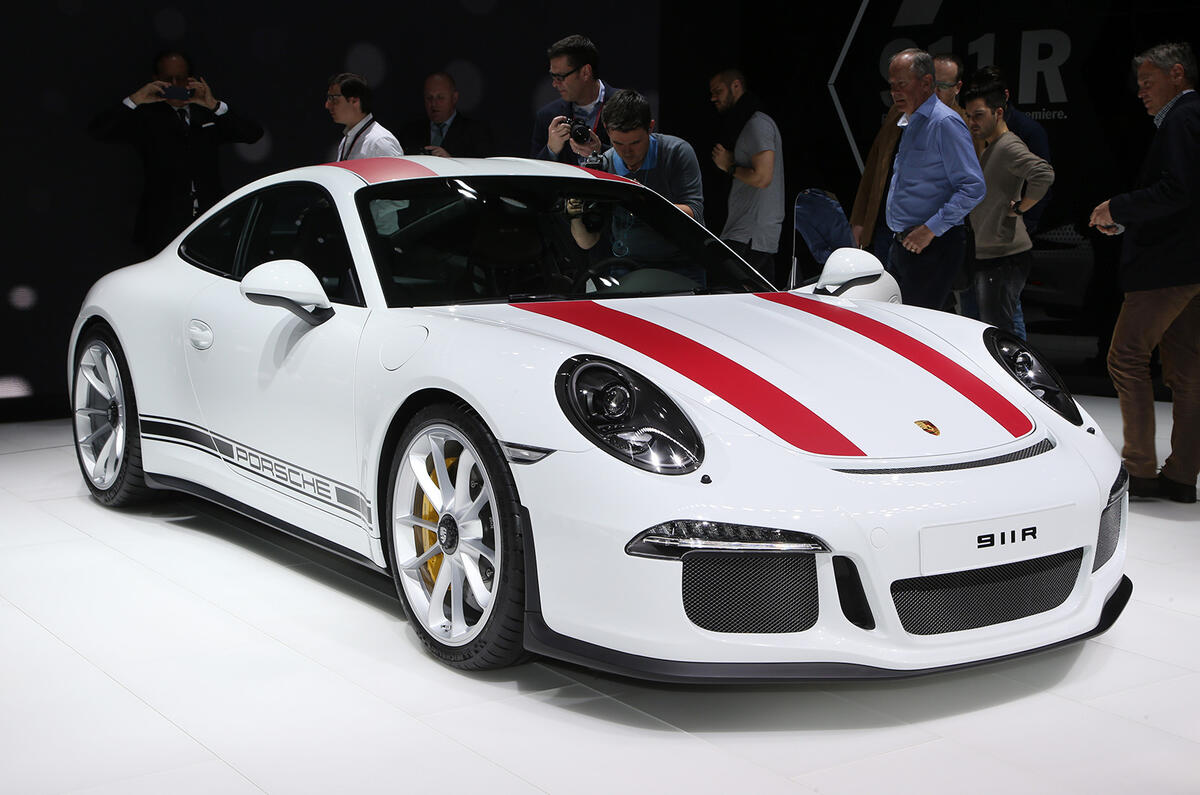When the Porsche 911 GT3, traditionally regarded as the world’s finest driver’s car, came back for its most recent generation with electric steering and an automatic gearbox, the consensus was that the days of sports cars with true mechanical feel and interactions were behind us.
Two cars since, from the same department at the same company, have proved otherwise: the Porsche Cayman GT4 and the new Porsche 911 R.
You don’t need me to blabber on how great the GT4 is – and how good the 911 R probably will be – for the reasons why, but what is interesting is the theory behind it, and how the 911 R in particular came about.
Read our full Porsche 911 R review here
I sat down with Porsche GT boss Andreas Preuninger at the Geneva motor show yesterday. He started on a philosophical point, stating that sports cars with normally aspirated engines and manual gearboxes will be “around forever”. Real mechanical tools, in other words.
Indeed, he reckoned they could soon become commonplace in the market. “Look at the classic car market. Why do you think people are buying classics? It’s for character. It’s the true old-school motoring feeling people long for. Modern cars, as fast as they are, don’t really have character. They go fast, but you get out after driving them and lack enthusiasm.”
Preuninger said the GT3 used to satisfy both “purists and go-fasts, purists loving the way you felt something and had moments of joy driving it, and go-fasts loving the way it was the perfect track tool”.
He admitted that, with developments in technology meaning the likes of an automatic gearbox would make the GT3 faster still, Preuninger said Porsche was at a “crossroads” with the development of the last GT3 and eventually settled on making it as fast as possible.
“The racers bought it, the purists bought classics,” said Preuninger. “That’s when the R came along.”










Join the debate
Add your comment
Marketing...
Say what you want about Ferrari, but you can still buy a Speciale! And that folks, is a bona fide CLASSIC, not a dumbed down GT3.
Oh Norma !
Unexpected Inadhesion
Not only classics. Even recent 911s (including the 4wd variety) possess the quality of "unexpected inadhesion" in spades, too. Particularly when presented with that trickiest of scenarios - the wet roundabout taken just-a-little-bit-too-quickly-but-not-insanely-so.
For a car with such a dreadful handling bias to acquire such a golden reputation speaks volumes of the sheer mastery of Porsche marketing.